Orioles are eye-catching birds having beautiful yellow and orange feathers. These are songbirds that look adorable amidst the fresh green leaves of the forest. They can be often found in the warmer seasons, Baltimore Oriole being common in the Eastern regions and a few variants across North America too.
Characteristics of Orioles:
Scientific Name: Icterus
Weight: 16-85 gram
Interaction with humans: Can’t be kept as pets
Temperament:
These birds are quite vocal, and both males and females are known to sing. They haven’t been domesticated by humans because they have special needs. It is even illegal to keep them as a pet in certain areas. They like living close to each other and spend most time foraging for insects and fruits.
Habitat:
Orioles live in various types of habitats such as open forests, river edges, marsh, shrublands, and others. Some can also be found in urban areas such as parks, farms, and areas with fruiting trees.
Oriole Breeding:
The pairing of orioles varies with the type of species. They often sign for mating and often lay 3-7 eggs. The incubation period for the eggs is about 2 weeks. It takes 2 more weeks for them to fly.
Oriole Diet:
Orioles feed on plants as well as animals. This includes fruits, seeds, berries, and insects such as snails, worms, caterpillars, spiders, crickets, and others. The exact diet preferences vary with the type of species as certain variants can feed on a large variety of food compared to others.
Caring for an Oriole:
Since these are wild birds, they can be found in zoos only if they have been injured in the wild. The zoo becomes a safe place for such injured birds to survive and reproduce as there are enough trees, branches, and bushes with other species of birds. They are fed enough plants and insects to keep them healthy.
Types of Oriole:
- Baltimore Oriole
- Orchard Oriole
- Bullock’s Orioles
- Scott’s Oriole
- Spot-breasted Oriole
- Hooded Oriole
- Altamira amd Audubon Oriole
1.Baltimore Oriole:
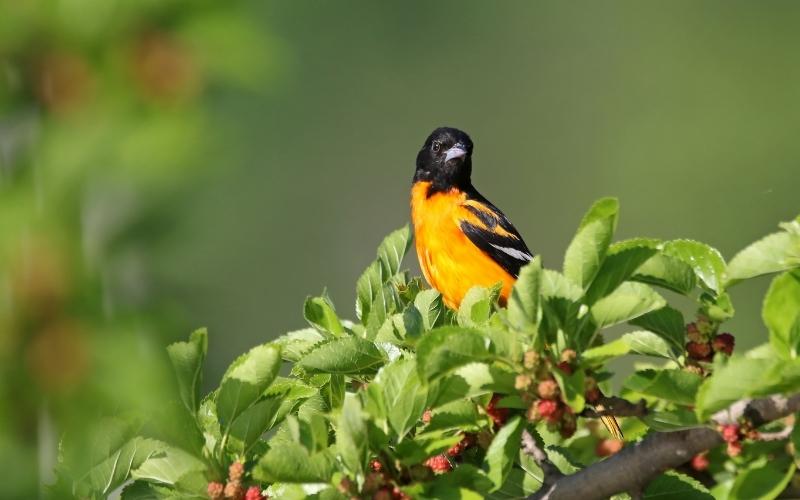
Color: Black and orange
Location: Found in Eastern and midwestern US
Breeding:
It interbreeds with the Bullock’s oriole on the western Great Plains, resulting in hybrid offspring.
Other Characteristics:
Most of them fly to the tropical regions in the far north and extreme southeastern US coast during winters.
2.Orchard Oriole:
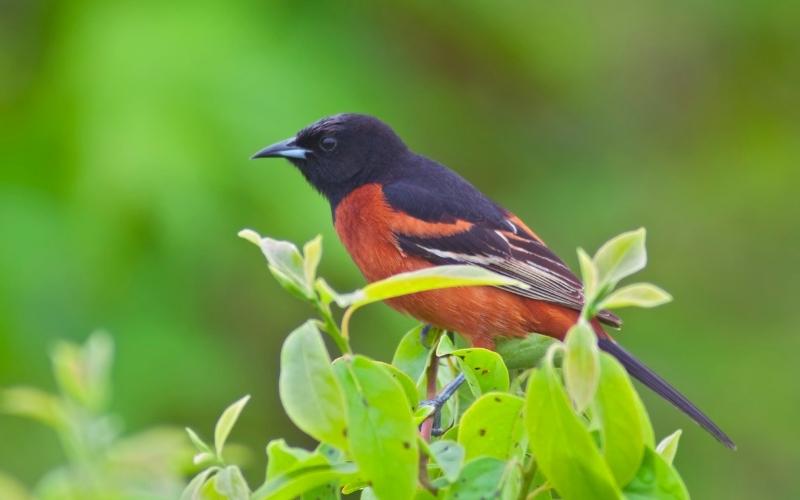
Color: Deep chestnut color(adult)
Location: It is the smallest oriole in North America found in the east and southwestern part during summer.
Other Characteristics:
It moves to the south during mid-July.
3.Bullock’s Orioles:
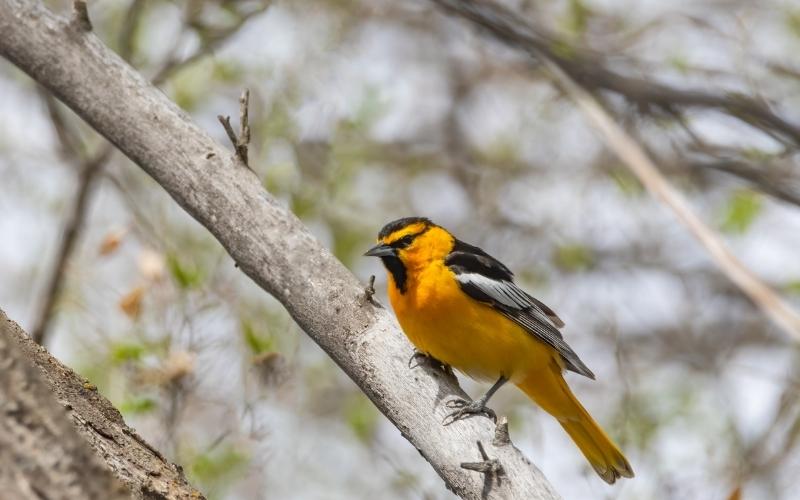
Color: orange and black
Location: Mostly found in west
Other Characteristics:
It loves feeding on grasshoppers.
4.Scott’s Oriole:
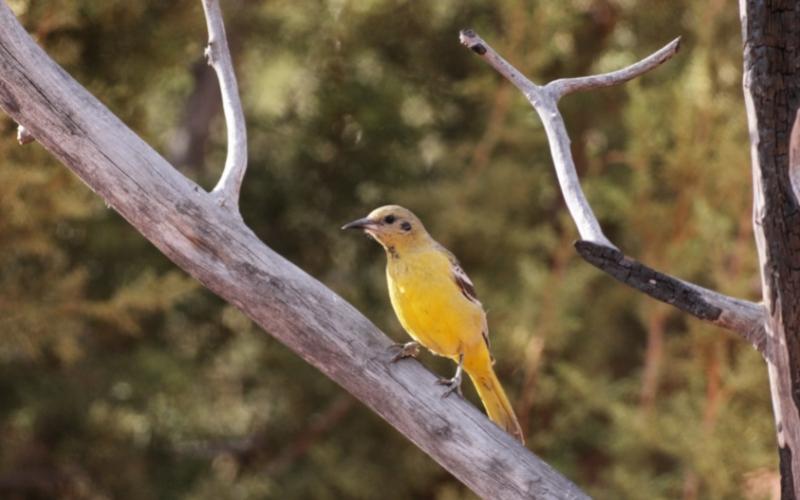
Color: lemon-yellow and back (male)
Location: Mostly found in the eastern California and northern Utah
Other Characteristics:
It is attracted to yucca plants where it builds its nest.
5.Spot-breasted Oriole:
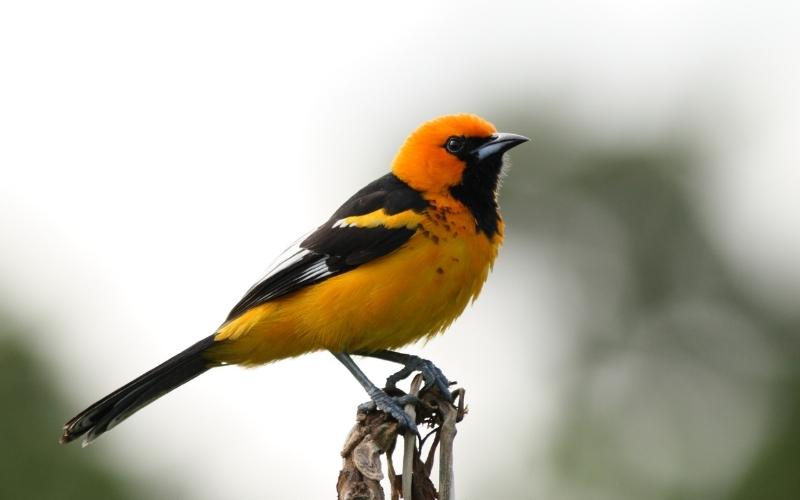
Color: black and orange
Location: Natively found in Central America
Other Characteristics:
Males and females of this species look similar.
6.Hooded Oriole:
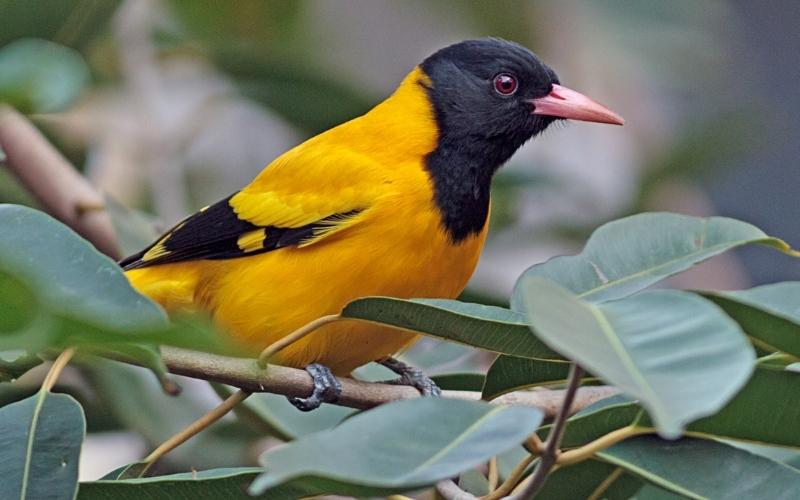
Color: Orange with black accents(adult males)
Location: They are found in lowland riversides, backyards, and canyons from coastal California to southern Texas
Other characteristics:
They build their sac-like nest in palm trees, sycamores, cottonwoods, or other trees
7.Altamira amd Audubon Oriole:

Location: Southern Texas
Color: Yellow with blackhead, tail, and wings.
Other Characteristics:
They don’t migrate like other species and remain in the subtropical climate in winters. Male and female Altamira orioles resemble large-sized male hooded orioles. Audubon songs seem like a person learning to whistle.
Conclusion:
Orioles are one of the most magnificent birds but their habitat destruction is a huge threat to the population. Other such factors include pesticides that are used for protecting fruits, which kill their prey and result in food shortages. So if any injured birds are found, they are taken to the zoo and safely kept there.












Leave a comment